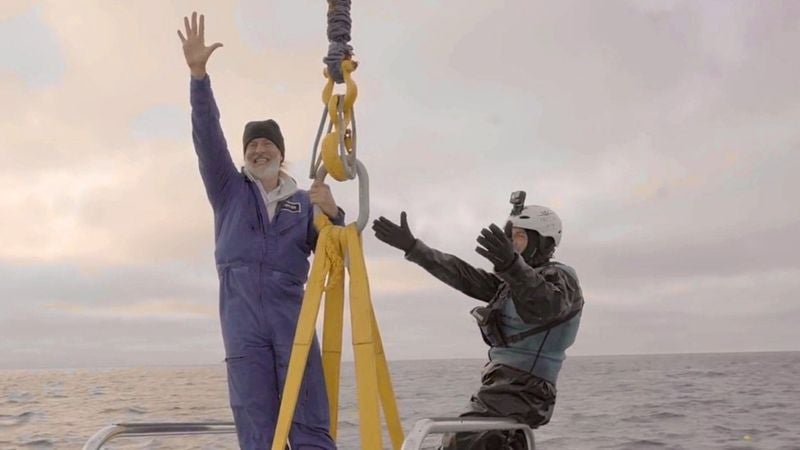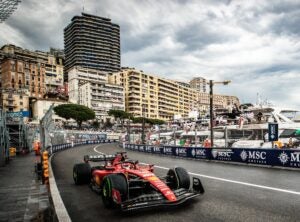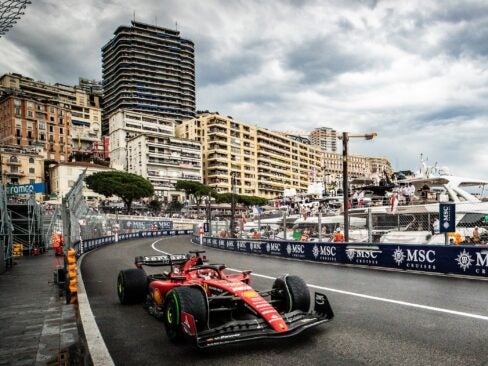Victor Vescovo has become the first person to visit the deepest point in each of the world’s five oceans. The American adventurer completed the Five Deeps Expedition by reaching the bottom of the Arctic’s Molloy Trench, some 3.5miles below the surface, last month.
Elite Traveler was invited aboard the support ship, the DSSV Pressure Drop, after its triumphant arrival in London, England, following the completion of a groundbreaking nine-month mission.
Vescovo, a guest contributor in Elite Traveler’s Spring issue, completed each of the five dives in a prototype submersible designed and developed by Triton Submarines. The 12-ton Limiting Factor allowed Vescovo to reach the deepest point in the Atlantic (27,480ft), Southern (24,390ft), Indian (23,596ft), Pacific (35,853ft), and Arctic (18,599ft) Oceans, in some cases for the first time in human history.
A successful investment banker, Vescovo funded the entire mission privately and spent millions achieving a lifetime ambition. Asked why he felt the drive to explore the ocean’s depths when no other individual or government seemed willing to contribute, he spoke of a lifelong desire to explore the unknown.
He told Elite Traveler: “These things need to be done. I come from a philosophy that says we’re put here not just to survive, or even just to be comfortable – but to contribute in some way. And the path I chose was to have some adventure whilst also doing something that could move us forward as a species.”
The Five Deeps team not took Vescovo to previously unheard of depths but also made a multitude of scientific discoveries. Dr Alan Jamieson, the expedition’s chief scientist, believes they have discovered upwards of 40 new species and gathered a huge amount of valuable data during the dives. He believes it could take upwards of five years to process all of the samples.
Asked of the greatest discoveries, Dr Jamieson said: “We probably added 2,000m (6,561ft) to the depth range of octopuses. We filmed something in the region of four to five new species of fish: three of which were in Antarctica in one dive, another was discovered off the coast of Tonga.”
In the true spirit of exploration, the expedition was the first time the Limiting Factor had been used in full operation. Patrick Lahey, a co-founder of Triton Submarines, insists it had been exhaustively tested before it took its first dive in the Puerto Rico Trench last December.
Vescovo said: “It’s very typical when a new ship or submarine is constructed, they have what the maritime community calls a shakedown cruise. You take it out, you rattle it and you find out what needs to fix and improved. We just happened to do the shakedown cruise for this submersible by doing the five deepest points in all five oceans. That’s like testing a bunch of mountaineering gear on the top of Mount Everest, but that’s what we chose to do.”
The expedition, however, did not come without its problems, the biggest of which occurred the night before they launched their first dive.
“The worst point came the night before the first dive to the Puerto Rican trench,” Vescovo said. “We had a prototype submarine, we had some issues and the team had to work incredibly long hours to fix the issues so that we could make a dive to that depth, which is deeper than any other operational submersible.
“There was a tough night before that whether or not we were going to proceed and whether the risk was worth the potential reward. I eventually got enough confidence that I would not have an unrecoverable issue and I remember standing right there saying that if I had any issues on safety I am going to abort the dive, come up and we will have to regroup.
“On that dive, everything went well and that was the crux moment that many expeditions face between potential failure and dramatic success that changes the whole momentum of an expedition.”
Vescovo and the core members of his team were speaking aboard the DSSV Pressure Drop. For more information on the Five Deeps Expedition, visit fivedeeps.com/home/expedition









